Stats:
weight: 945g (2lbs)
overall length: 92cm (36“)
blade length: 77cm (30.3“)
blade width at guard: 5cm (2“)
grip length: 9cm (3.5“)
PoB: 12cm (4.7“)
CoP: 56cm (22“)
hilt node: 3cm (1.2) before guard in the handle
forward pivot point: 53cm (21“)
This sword is inspired by the swords shown in the oldest fencing manual we have, the I.33. It dates to around 1300 and depicts fighting techniques with sword and buckler. The swords presented there all share several characteristics: double-edged blades of medium length with a straight or sometimes almost concave profile taper. Fullers are present though their exact length is not visible in the drawings. The hilts generally are of very simple configuration (with a few exceptions).
Following the Oakeshott typology, these swords could be either type XII or type XIV, there are arguments to make for both and one should always keep in mind that most originals aren‘t clear-cut to fall neatly in one category.
I wanted a handy appereance for this sword, not a long, slender weapon but a stout and fairly compact sidearm. This is a sword for unarmored duelling and self defense situations, easy to carry around, likely in combination with a buckler. The blade is light, with acute edges and lively in handling. It moves swiftly and feels, for lack of a better word, „snappy“, ready to lash out at a moment‘s notice. It is not without blade presence and can absolutely deliver a powerful blow. All in all a good weapon for sword and buckler fencing.
The fittings are unadorned, a short forward-curved guard and a type J pommel with small peen block. The pommel plays an important part in the handling of the sword. Due to the short grip (something that is very often not done properly on modern reproductions), the heel of the hand and the pinky by necessity nestle into the flare of the pommel. This has a noticeable impact on handling, giving a secure yet responsive and natural grip.
While the sword‘s blade geometry shows its bias towards cutting or slicing actions, the tip is absolutely suitable for thrusts into soft targets and the handling encourages such actions as well. The distal taper mirrors the profile taper with an agressive concave tapering over the first few inches that then gradually fades out. This puts more mass near the guard, lightening up the tip to result in a sword with an agile point that reacts well to small movements of the hand. In combination with the placement of the pivot points this makes it easy to orient the sword (back) onto the target during winding actions.
The blade retains enough thickness and width to give a fairly stiff upper half and allow for a bit „omph“ in the cut, considering how rather light and compact this sword is. This facilitates both offensive and defensive actions. Too light a blade is easily displaced.
This sword was reviewed by Roland Warzecha here
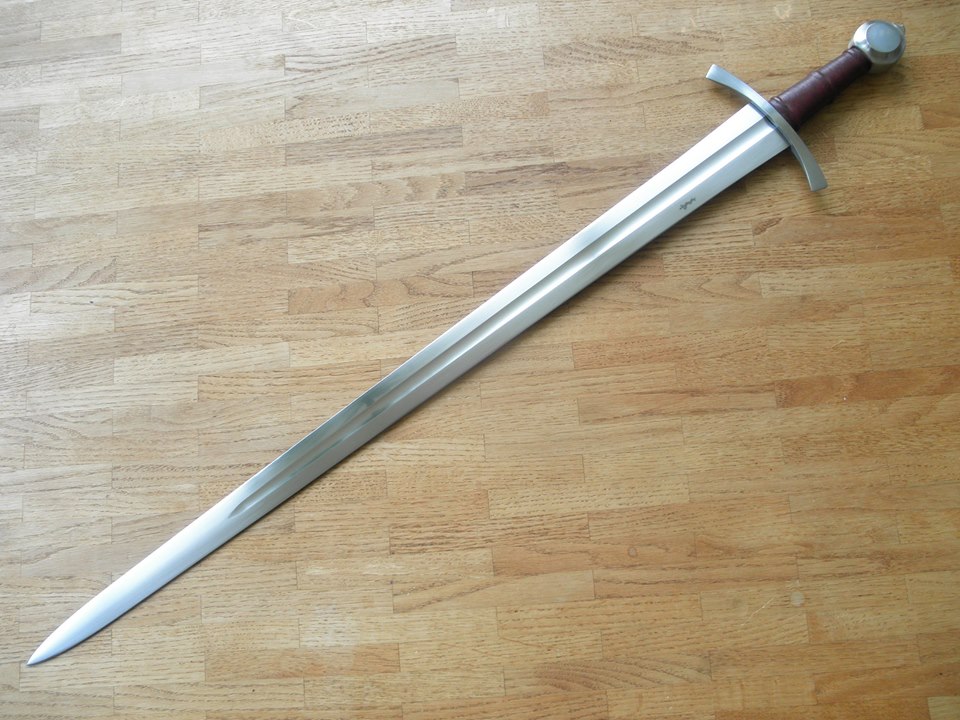
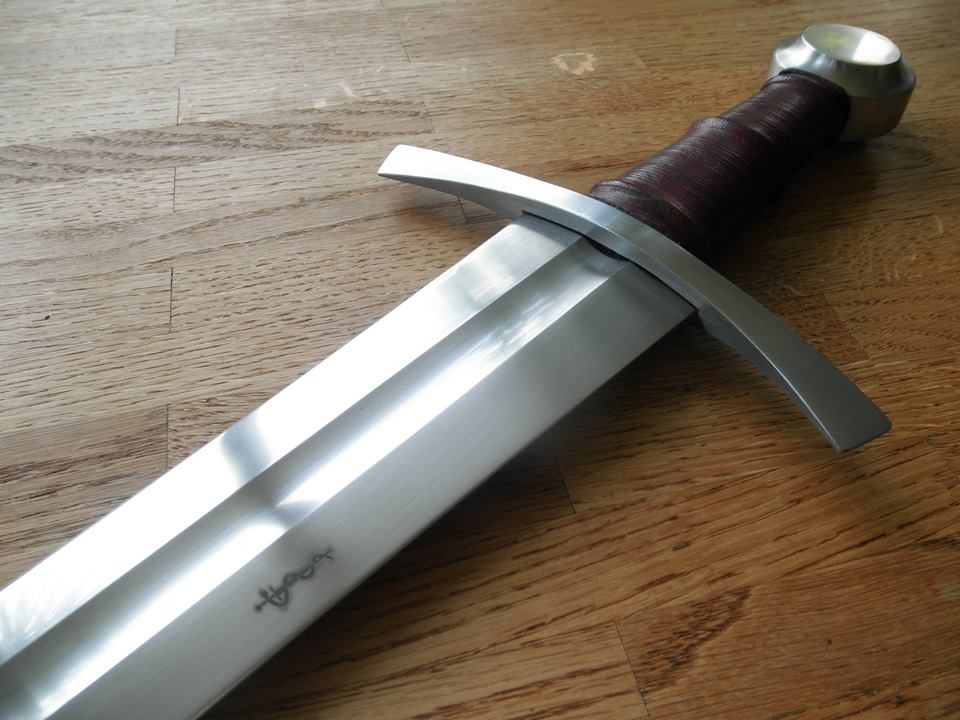
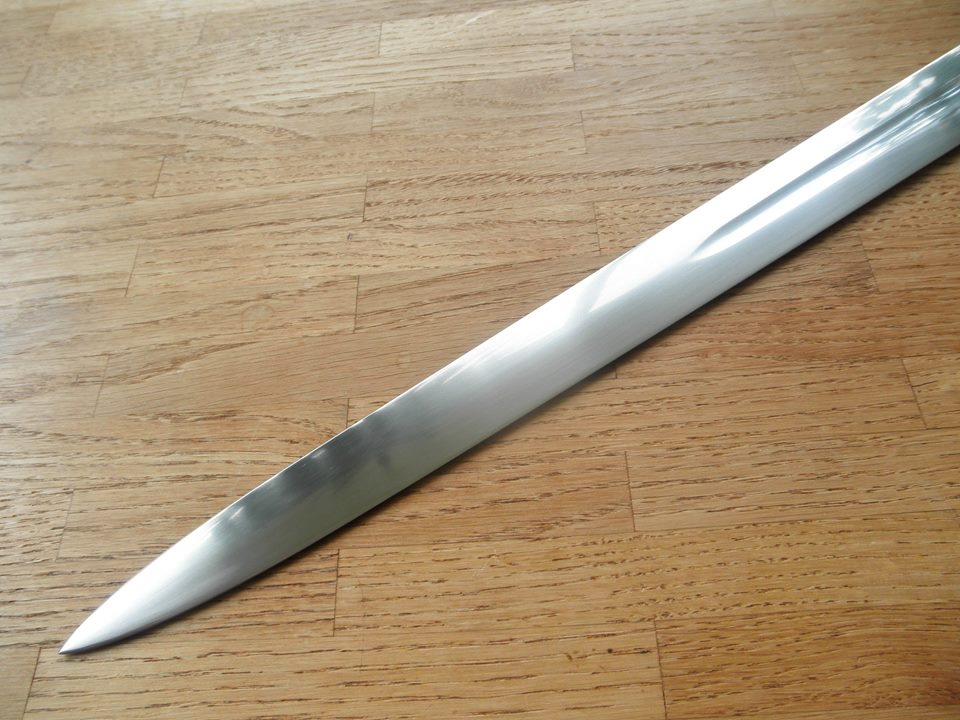
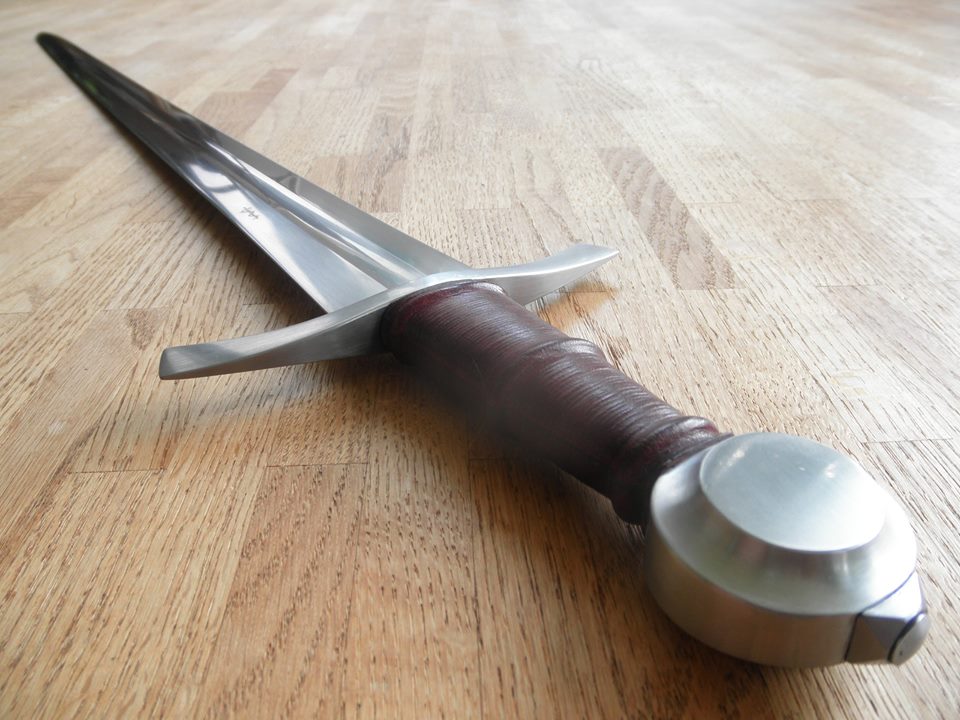
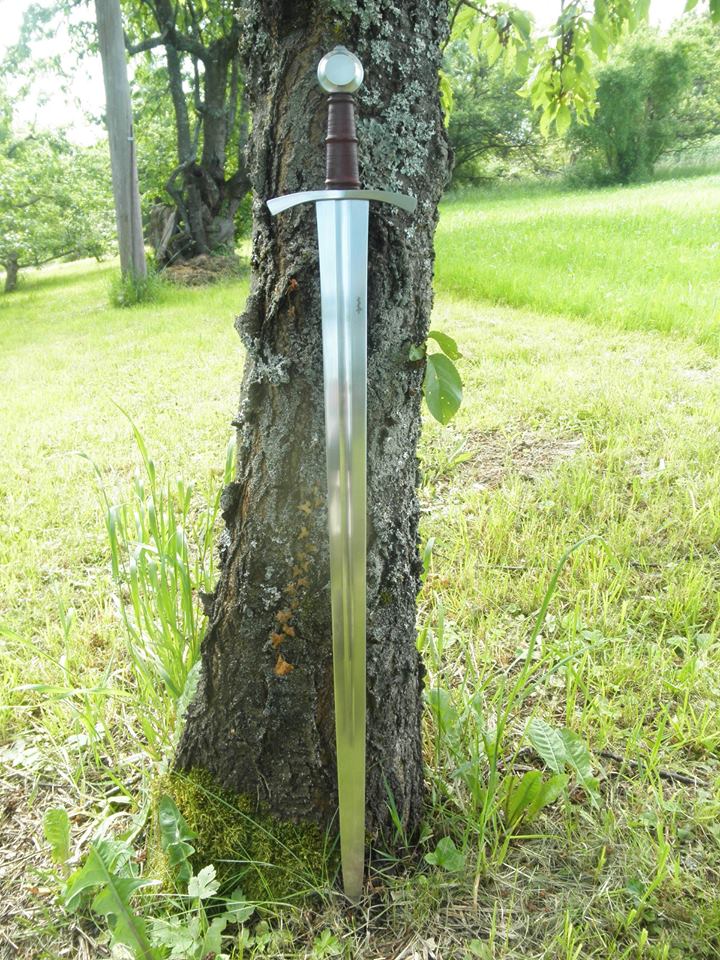
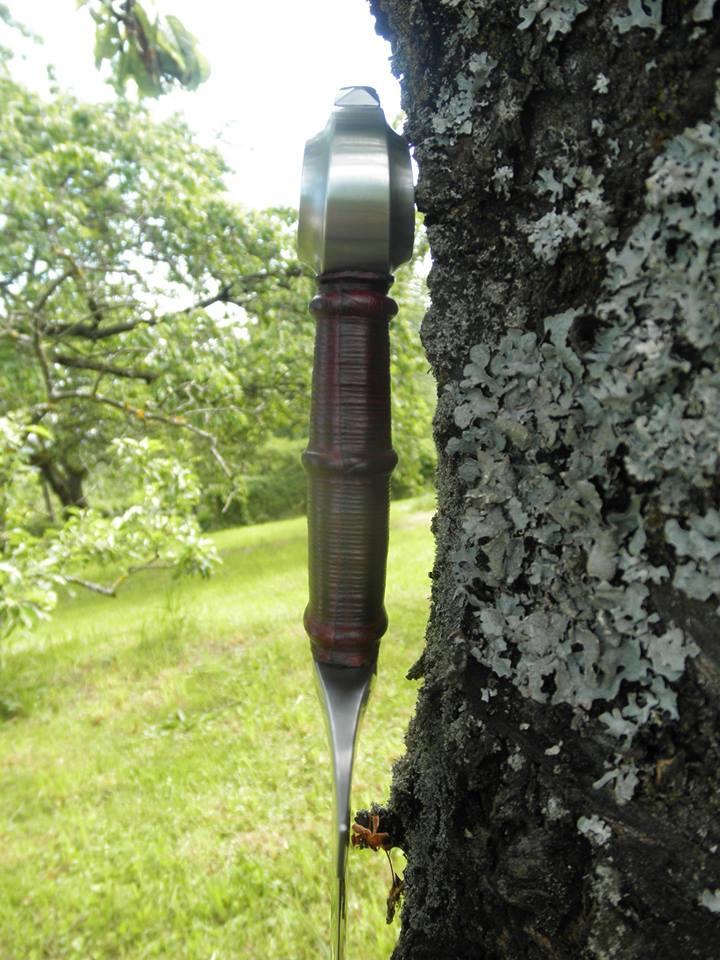
The sword seen in the priest’s hand in the upper right corner shows many of the same characteristics as my interpretation. A feature I really like are the flared shoulders. My version is a good deal more subtle in that but it really adds to the harmonious lines.
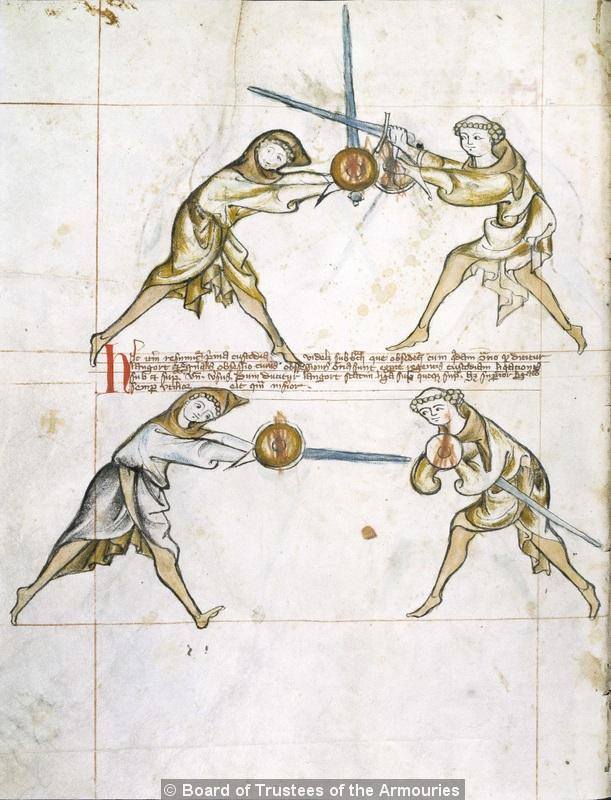
As for the cutting performance… silent cut on an empty tetra pack. Nuff said. 😀